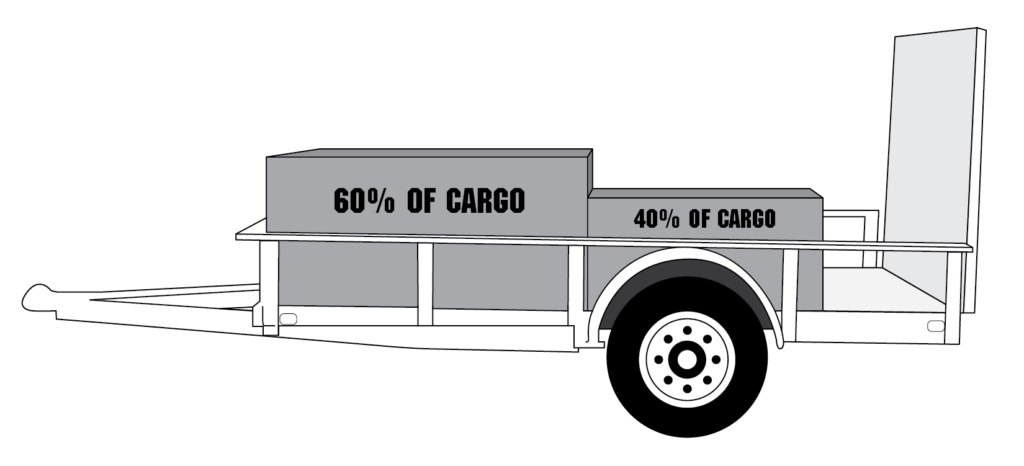This article answers the popular question: What is the trailer 60/40 rule?
The 60/40 rule means that you should put 60% of the trailer’s total weight in front of the trailer axles and 40% of the load weight behind the axles.
Why is it important to follow the 60/40 rule?
The likelihood of trailer sway increases if too little of the trailer’s weight rests on the hitch and too much of the tow load is positioned behind the trailer axles.
What is trailer sway?
Trailer sway is a side-to-side oscillation of the trailer that can lead to trailer control loss. If trailer sway becomes too excessive, it can lead to a crash or rollover if you are unable to correct the sway.
What causes trailer sway?
Trailer sway can be caused by an improperly positioned tow load, a sudden steering maneuver, lane change, a wind gust, or even debris on the roadway hitting your trailer tire. Trailer sway will often correct itself after a few side-to-side oscillations, but high tow speeds and improper trailer weight distribution may cause the trailer sway to increase with each oscillation until the vehicle loses control.
What to do if your trailer starts to sway?
When a trailer starts to sway, the best response is to hold the steering wheel straight, let off the gas, and apply the trailer’s brakes. Applying the trailer’s brakes counters the sway and will help realign the trailer. If you can, stop to redistribute the tow weight of your vehicle to follow the 60/40 rule. If you can’t pull over, decrease your drive speed to avoid further sway during your trip.
Calculate your Gross Vehicle Weight Rating (GVWR)
Safe trailering begins with proper equipment, proper setup, and proper driving. Once you understand your trailer’s weight rating, it will help you know how to properly load your trailer with the correct cargo weight and positioning. Keeping the GVWR within your trailer’s limits will keep you safe while hauling and avoid trailer sway.
